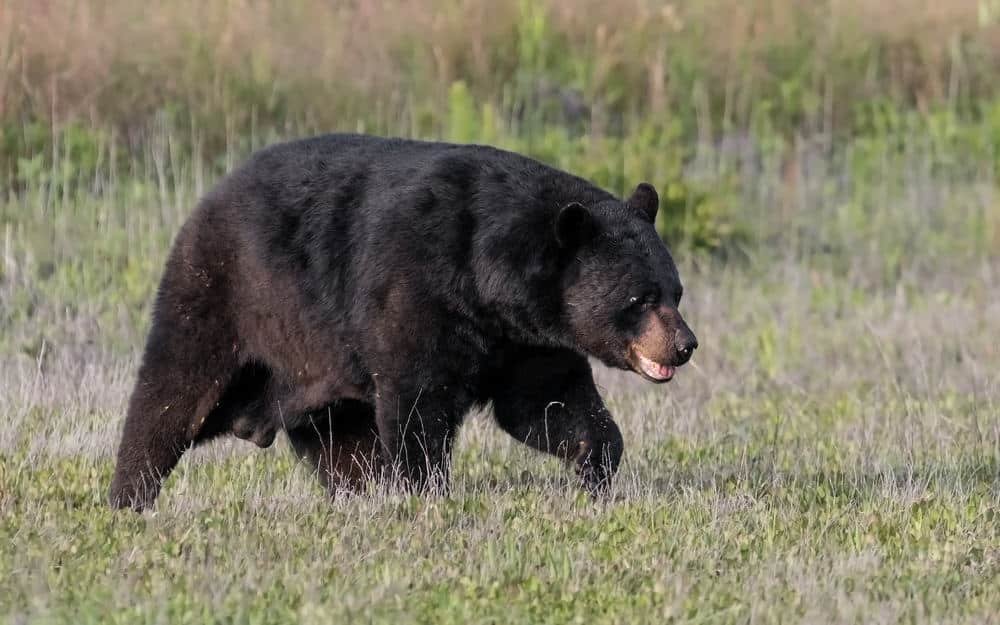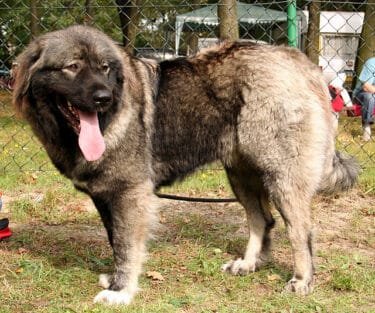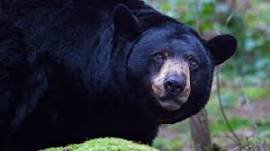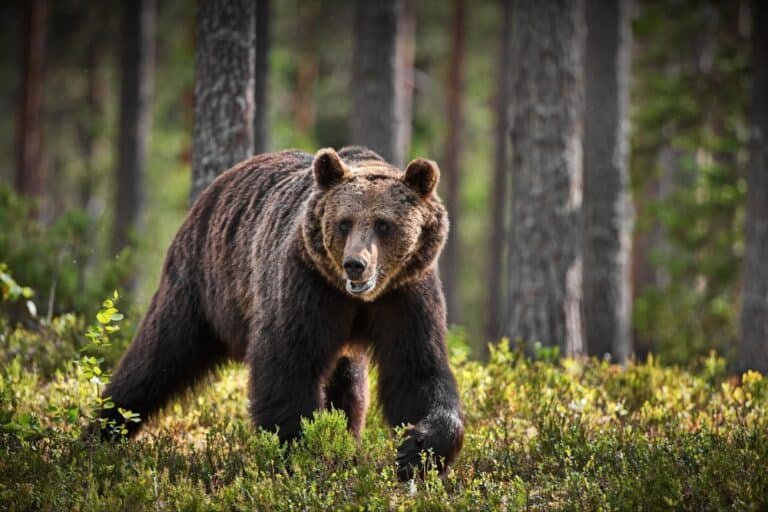Picture this: the crisp morning air, the rustling leaves beneath your boots, and the adrenaline coursing through your veins as you embark on an exhilarating bear hunting expedition.
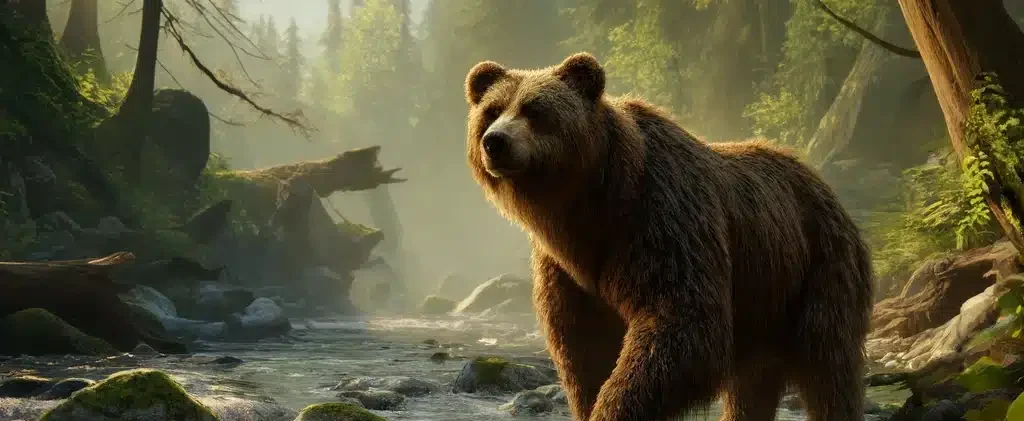
In the picturesque landscapes of North Carolina, you are ready for bear hunting NC. With its diverse wildlife and abundant bear population, the Tar Heel State offers a haven for hunters seeking both challenge and reward. The popularity of bear hunting in North Carolina is deeply rooted in its rich history.
Dating back centuries, when Native American tribes roamed these lands, bear hunting was a vital practice for survival. As European settlers arrived on these shores, they also recognized the importance of pursuing bears for sustenance and protecting their livestock and communities from these formidable creatures.
Fast forward to modern times, and bear hunting has evolved into a beloved pastime embraced by passionate hunters across North Carolina. The pursuit of bears provides an opportunity for adventure and allows individuals to connect with nature on a primal level, honoring ancestral traditions while fostering wildlife management and conservation.
Wildlife Management: Balancing Nature’s Equilibrium
Bear hunting is pivotal in wildlife management and conservation efforts throughout North Carolina. While some may view it contradictory to protect animals by pursuing them with firearms or bows, a delicate balance comes into play.
Controlling bear populations helps minimize human-wildlife conflicts and ensures sustainable ecological systems. North Carolina boasts a thriving black bear population that needs careful monitoring to prevent overpopulation.
Wildlife agencies can effectively manage these populations by implementing regulated hunting seasons with specific bag limits and following sound scientific practices. This management approach helps mitigate potential threats, such as disease outbreaks or habitat degradation, that can harm bears and their surrounding ecosystems.
Furthermore, revenues generated from licensing fees associated with bear hunting are reinvested in wildlife conservation programs. These funds support habitat restoration, wildlife research, and educational outreach.
Through their passion for the sport, Bear hunting enthusiasts contribute directly to preserving and protecting bears and a myriad of other wildlife species that call North Carolina home. So, let us embark on a journey through the fascinating world of bear hunting in North Carolina, where adventure meets responsibility, tradition embraces innovation, and hunters become stewards of the land.
Detailed Information on the Black Bear Species Found in NC
North Carolina is home to a thriving population of black bears, scientifically known as Ursus americanus. These majestic creatures are the only species of bear found in the state and are characterized by their black fur, although some individuals may have variations such as brown or cinnamon coats.
In terms of size, adult male black bears can weigh between 200 to 600 pounds, while females typically range from 100 to 400 pounds. The average shoulder height of these bears stands at around three feet.
Black bears in North Carolina possess several distinguishing features, including a prominent shoulder hump, thick fur, small rounded ears, and a relatively straight facial profile. They have sharp claws adept at climbing trees – an ability they commonly employ when seeking refuge or foraging for food.
Factors Contributing to the Growth and Distribution of Bear Populations
The growth and distribution of bear populations in North Carolina are influenced by various factors essential for survival. One crucial aspect is habitat availability and quality.
Bears prefer habitats with dense vegetation cover, such as forests or swamps, where they can find suitable food sources like nuts, berries, insects, and occasionally carrion. Forested regions with diverse plant communities provide an ideal environment for these omnivorous creatures.
Another contributing factor is the availability of water sources near their habitats since bears require consistent access to water for drinking and cooling off during the hot summer months. Additionally, undisturbed areas far from human settlements play a role in facilitating healthy bear populations by reducing human-wildlife conflicts and ensuring minimal disturbance during breeding seasons.
Hunting Regulations and Seasons in NC
An Introduction to the Licensing Process
So, you’re itching to embark on a thrilling bear-hunting adventure in North Carolina? Well, my friend, before you grab your gear and head for the wilderness, you must familiarize yourself with the licensing process.
Hunting bears is regulated by the North Carolina Wildlife Resources Commission (NCWRC) in this neck of the woods. Aspiring hunters must obtain a valid hunting license from the NCWRC to legally partake in this pursuit.
To acquire your license, you have a few options at your disposal. One popular choice is to visit the NCWRC’s website and complete an online application.
Alternatively, you can visit one of their authorized wildlife service agents scattered across the state and apply in person. The licensing fees vary depending on your residency status and whether you opt for an annual or short-term permit.
Understanding Rules, Bag Limits, and Legal Methods
Now that we’ve tackled the licensing process let’s delve into some details: rules, bag limits, and legal methods for bear hunting in North Carolina. Firstly, it’s crucial to note that bear hunting seasons are strictly regulated here. The NCWRC determines specific dates for hunters to pursue these magnificent creatures.
Typically spanning from October through early January, these seasons coincide with periods when bear populations are stable and can withstand limited harvest. When venturing into bear territory armed with nothing but determination (and hopefully a proper weapon), there are some vital rules that every aspiring hunter must follow.
Per statewide regulations for big game hunters, hunting bears without wearing blaze orange is illegal. Baiting bears or using dogs during hunting requires additional permits or tags granted by the NCWRC.
Generally, the NCWRC allows hunters to take one bear per open season. Still, additional restrictions or allowances may exist in certain areas, such as dependent cubs or female bears with cubs. So, aspiring bear hunters, remember to get your licenses sorted out and familiarize yourselves with the rules and bag limits before venturing into the wilds of North Carolina.
It’s a small price to pay for the privilege of experiencing this ancient pursuit while abiding by ethical standards and ensuring sustainable conservation efforts. Happy hunting!
Preparing for a Bear Hunt in North Carolina
Choosing appropriate gear, including firearms and ammunition
When embarking on a bear hunt in the rugged terrains of North Carolina, it is crucial to equip yourself with the right gear. First and foremost, you’ll need a reliable firearm that can deliver enough stopping power to take down a bear. Choose a caliber such as .270 Winchester or .30-06 Springfield, which provides adequate penetration and energy.
Coupled with high-quality ammunition designed specifically for hunting large game-like bears, you’ll increase your chances of success. Alongside your firearm choice, carefully consider the type of clothing you’ll wear during your hunt.
Layering is key as it allows you to adjust your body temperature based on activity level and weather conditions. Start with moisture-wicking base layers that keep sweat away from your skin.
A mid-layer such as fleece or wool provides insulation while allowing air circulation. For the outermost layer, opt for waterproof and windproof garments to protect yourself from the elements.
Essential skills and techniques for tracking, stalking, and calling bears
Tracking bears requires honed observation skills and knowledge of their movements. Look for fresh tracks on muddy or soft ground near water sources or feeding areas.
Bears tend to leave deep imprints due to their weight. Pay attention to claw marks on trees or shredded bark, which indicate territorial marking.
Stalking requires patience and stealthy movement through the dense forests of North Carolina. Move slowly, scanning your surroundings for any signs of movement or sounds that might indicate a bear’s presence nearby.
Utilize natural cover like trees and rocks to stay hidden while closing in on your target. Calling bears can be an effective technique when done correctly.
Practice mimicking various bear vocalizations, such as grunts or huffs, using mouth diaphragms or electronic calls available in the market. Understanding the right situations to call and when to remain silent is crucial.
Experiment with different calls and observe bear behavior patterns to refine your skills. By choosing the right gear and mastering essential skills like tracking, stalking, and calling bears, you’ll be well-prepared for a memorable bear-hunting experience in North Carolina’s challenging terrains.
Popular Bear Hunting Locations in North Carolina

The Majestic Pisgah National Forest: Where Bears Roam Free
Nestled within the breathtaking mountains of western North Carolina, Pisgah National Forest is a haven for bear hunters seeking adventure and bountiful game.
Spanning over 500,000 acres, this vast wilderness offers abundant opportunities to encounter black bears in their natural habitat. The forest’s diverse ecosystems, ranging from dense hardwood forests to high-elevation balds, create an ideal environment for bears to thrive.
One of the notable features of Pisgah National Forest is its numerous game lands, such as the Shining Rock Wilderness and Middle Prong Wilderness. These areas are well-known hotspots for bear activity due to their rich food sources, such as acorns and berries.
However, venturing into these untamed landscapes requires careful navigation and understanding of the terrain. Steep slopes and rugged trails demand physical endurance and a sense of adventure from hunters who dare to explore this majestic realm.
Riverine Paradise: The Allure of Coastal Game Lands
North Carolina’s coastal regions offer an exciting alternative for those seeking a different bear hunting experience. Game lands along rivers like the Roanoke and Neuse provide prime opportunities for encountering black bears in their unique marine-influenced habitats.
These areas are replete with lush bottomlands, swamps, and marshes – all teeming with life that sustains the bear population. Hunting along coastal game lands presents its own set of challenges.
The dense vegetation can make it difficult to spot bears at a distance, necessitating patience and keen observation skills. Navigating through muddy terrains or crossing shallow creeks may also be part of the adventure.
However, seeing bears emerging from thickets or swimming across waterways is an awe-inspiring sight that makes the effort worthwhile. Whether you venture into the majestic Pisgah National Forest or explore the riverine paradise of coastal game lands, North Carolina offers a variety of prime bear hunting locations.
Each area has unique characteristics and challenges, providing hunters with an unforgettable experience and a chance to connect with nature in its purest form. So, grab your gear, embrace the wild, and embark on an expedition to these remarkable hunting grounds where bears roam free.
Bear Hunting NC: Tracking Bears
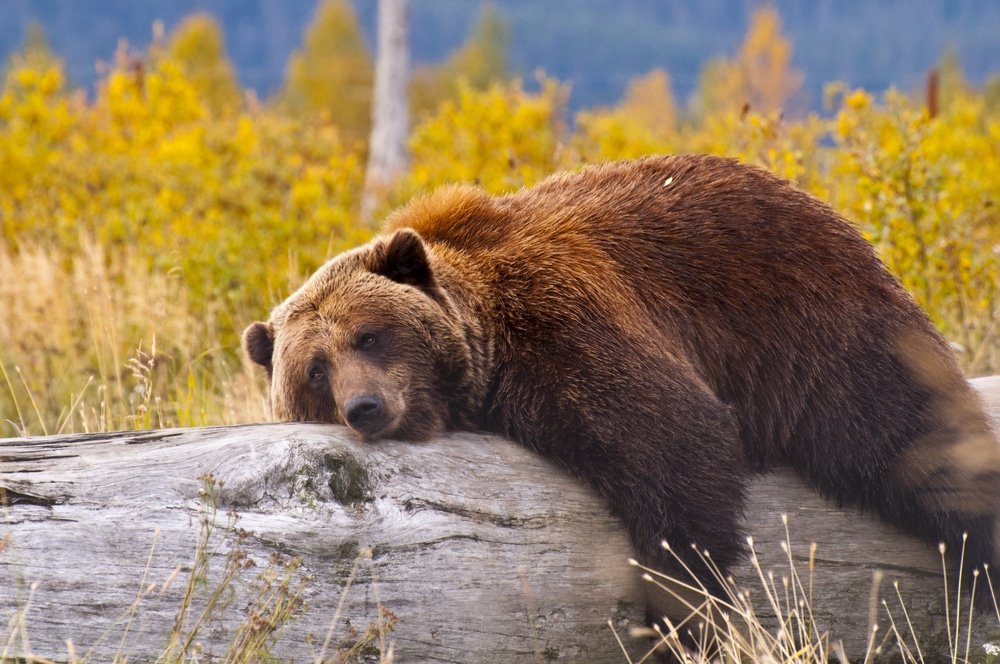
The Art of Reading Nature’s Clues
Tracking bears in the wild is a skill that requires observing and interpreting the signs they leave behind. One of the most common and obvious indicators is their tracks.
The impressive size of a bear’s paw print can provide crucial information about its size, weight, and direction of travel. Their tracks often show distinctive claw marks, which help differentiate them from other animals.
Note the depth and freshness of the tracks to get an idea of how recently the bear passed by. Bears also leave valuable clues in their scat or droppings.
Bear scat can vary in appearance depending on their diet, but it typically looks like large piles with visible traces of undigested food like berries or plant material. By examining these droppings’ color, consistency, and contents, hunters can gain insights into a bear’s feeding habits.
The Secrets Hidden in Rubs and Signposts
Bears are known for marking trees by rubbing or scratching against them—a behavior often associated with scent marking to communicate their presence to other bears.
These rubs appear as worn patches on tree trunks with loose bark or broken branches nearby. Pay attention to fresh rubs with moist sap oozing or exposed wood showing lighter colors; these indicate recent activity.
Understanding a bear’s feeding habits is essential for successful tracking. Bears have varied diets depending on factors such as season and location.
They primarily feed on plants, nuts, fruits, insects (including ants and termites), and occasionally small mammals or carrion, if available. Knowing what specific food sources are prevalent in different seasons will give hunters an advantage when predicting a bear’s movements.
Mating Rituals and Seasonal Movements
Bears have fascinating mating behaviors that can be important to track during the hunting season. Mating typically occurs between June and July, with peak activity. Male bears actively seek out receptive females, often leaving visible signs of their passage, like fresh tracks or disrupted vegetation.
Attention to these signs can lead hunters to areas where bears congregate for mating purposes. Understanding seasonal movements is crucial since bears establish specific home ranges and exhibit predictable patterns based on food availability and environmental conditions.
During the late summer and fall, bears are more likely to concentrate around areas with abundant food sources, such as berry patches or oak groves, in preparation for winter hibernation. By studying their feeding habits and preferred habitats, hunters can anticipate where they might find active bear populations at different times of the year.
Bear Hunting Methods: Traditional vs. Modern
Exploring traditional methods like still-hunting or baiting
When it comes to bear hunting, hunters have employed various approaches over the years. Traditional methods like still-hunting and baiting have been widely used and have their unique charm. Still-hunting, as the name suggests, involves moving slowly and quietly through hunting grounds in search of bears.
This method requires patience, stealth, and a deep understanding of bear behavior. It allows hunters to carefully observe their surroundings for any signs of bears, such as tracks or scat.
Once spotted, the hunter must exercise caution in stalking closer for a clean shot. Baiting is another traditional method that has successfully attracted bears to specified locations.
Hunters set up bait stations with enticing food such as fruits, grains, or even carcasses. Bears are known for their exceptional sense of smell, which leads them straight to these baits.
This approach allows hunters to establish control over the hunting area and increase their chances of a successful encounter with a bear. However, hunters must remember that baiting must be done responsibly and legally within the guidelines set by North Carolina’s hunting regulations.
Spot-and-stalk or using hounds
In recent years, modern techniques in bear hunting have gained popularity among experienced hunters seeking new challenges and excitement on the hunt. One such technique is spot-and-stalk hunting.
This method involves scouting an area from vantage points like hillsides or tree stands to identify bears at a distance before closing in on foot for a shot opportunity.
Spotting scopes or binoculars are essential to locate bears from afar without alerting them. Another modern approach is using hounds for bear hunting—a practice deeply rooted in North American history.
Specially trained dogs arack and chase bears, often known as “treeing,” when the bear takes refuge in a tree. The dogs’ keen senses enable them to detect bear scent trails and follow them relentlessly.
This method requires skilled handlers to navigate rugged terrains and keep up with the dogs’ speed and agility. Though it may be physically demanding, hunting with hounds provides an exhilarating experience for hunters and canines.
Traditional and modern methods have advantages and appeal to different types of hunters. Hunters need to recognize the specific regulations that apply to each method in North Carolina, ensuring ethical practices are followed while pursuing these majestic creatures.
Ethical Considerations in Bear Hunting
Fair Chase Principles to Ensure Responsible Hunting Practices
Regarding bear hunting in North Carolina, ethical considerations play a significant role in shaping responsible hunting practices. One key principle hunters follow is the idea of fair chase, which emphasizes giving the animal a fair chance to escape and using ethical means to pursue and harvest the bear. This principle ensures that hunting remains a challenging endeavor where the animal has a reasonable chance of survival.
To adhere to fair chase principles, hunters must rely on their skills and knowledge rather than exploiting advantages that give them an unfair advantage over the bear. This means avoiding methods like using high-powered rifles from long distances or trapping bears in an enclosed area with no possibility of escape.
Instead, hunters aim for a more balanced interaction, where they must put effort into tracking, stalking, and outsmarting the bear. By following these principles, hunters can maintain respect for the animal being pursued and the heritage of hunting itself.
Addressing Topics like Trophy Hunting or Overharvesting
Bear hunting also raises controversial topics such as trophy hunting and overharvesting. Trophy hunting generally refers to selectively targeting animals with specific desirable traits (such as large size or unique qualities) solely for display or bragging rights rather than subsistence or population control purposes.
While some individuals argue that trophy hunting contributes financially to conservation efforts and supports local communities through revenue generation, others criticize it as an unethical practice driven by ego and greed.
Another concern related to bear hunting is overharvesting – taking too many bears from the population without considering sustainable limits. Overharvesting can disrupt the ecological balance by reducing population numbers beyond what natural reproduction can support.
Wildlife management agencies in North Carolina must implement strict regulations on bag limits, seasons, and licensing processes to prevent overharvesting and maintain a healthy bear population. Responsible hunters also play a crucial role in ensuring sustainable hunting practices by adhering to these regulations and reporting their harvest accurately.
While bear hunting in North Carolina offers thrilling experiences and contributes to wildlife management, it is essential to approach it with ethical considerations in mind. Following fair chase principles ensures that hunting remains an engaging challenge where both the hunter and the hunted can demonstrate their skills.
Additionally, addressing controversial topics like trophy hunting and overharvesting requires thoughtful deliberation and strict regulations to protect the integrity of bear populations for future generations. By embracing responsible hunting practices, hunters can demonstrate respect for nature while enjoying their passion for the outdoors.
Tips for a Successful Bear Hunt in NC
Choosing the Right Spot
When it comes to bear hunting in North Carolina, location is everything. To increase your chances of a successful hunt, choosing the right spot is crucial. Look for areas with dense cover, such as thickets or swamps, where bears will likely seek refuge during the day.
Additionally, focus on locations near food sources like berry patches or oak groves – bears have voracious appetites and will often return to these areas repeatedly. By scouting potential hunting spots beforehand and observing signs of bear activity like tracks or droppings, you can narrow your choices and increase your chances of encountering a bear.
Patiently Waiting for Your Turn
Bear hunting requires patience – lots of it. Bears are more organized than other game animals that move around constantly.
Once you have chosen a prime spot, prepare yourself for long hours of waiting and observation. Set up your blind or tree stand in an area with good visibility, and ensure you’re comfortable – being fidgety due to discomfort can scare away bears.
Bring some snacks, water, and books or magazines to pass the time during those quiet moments when nature seems eerily silent. Remember that bear hunting is not a sprint but a marathon; stay focused and alert while waiting for that perfect shot opportunity.
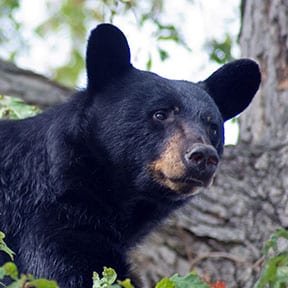
Conclusion
Bear hunting in North Carolina offers thrilling opportunities for hunters seeking an adventure amidst breathtaking natural landscapes. By choosing the right spot with dense cover and food sources nearby significantly enhances your odds of success.
Patience is key; be prepared to spend long hours quietly observing from a blind or tree stand without growing restless. Furthermore, remember that ethical considerations play an important role in bear hunting—always adhere to fair chase principles and responsible hunting practices.
Respect for wildlife and the environment is paramount. Ultimately, a successful bear hunt in North Carolina involves harvesting a majestic creature, immersing oneself in nature, and embracing the challenges it presents.
So, lace up your boots, equip yourself with knowledge and gear, and embark on an unforgettable bear-hunting experience that will leave you with memories to cherish for a lifetime. Happy hunting!

